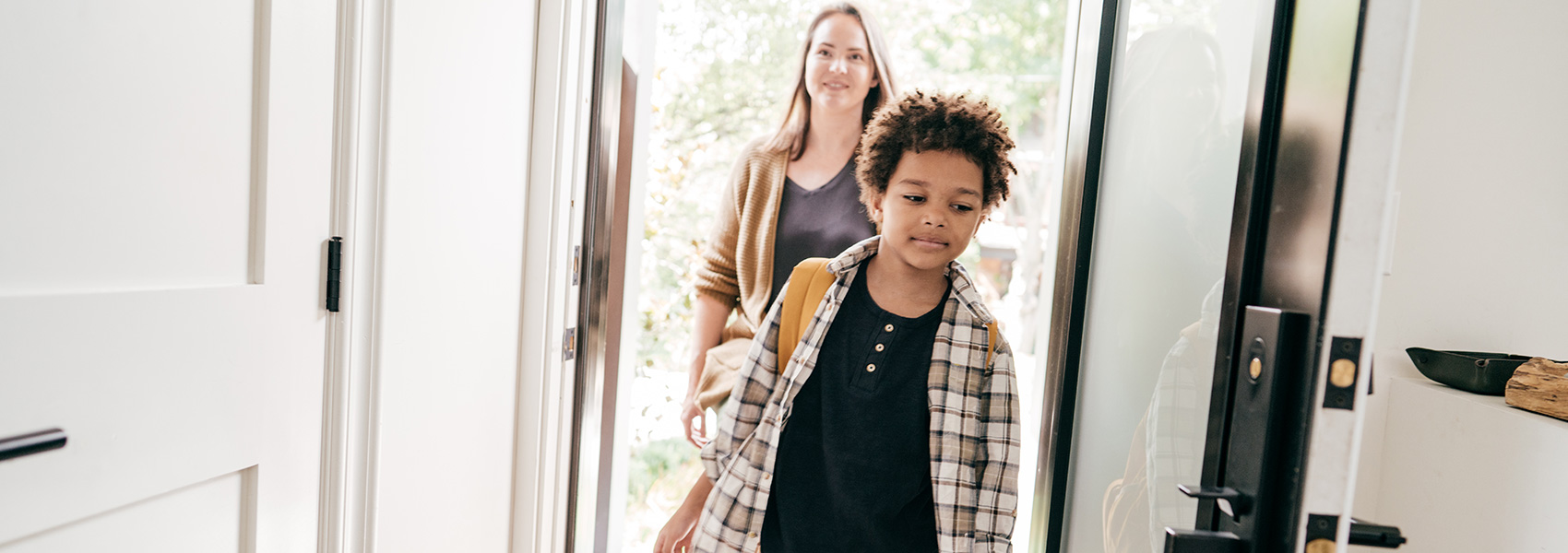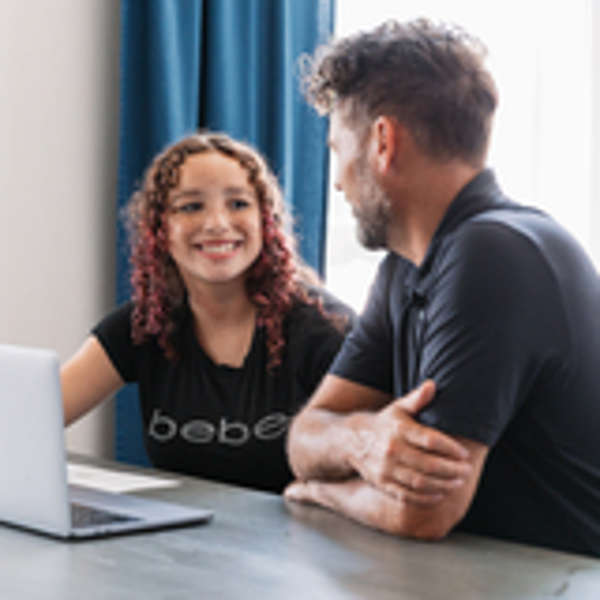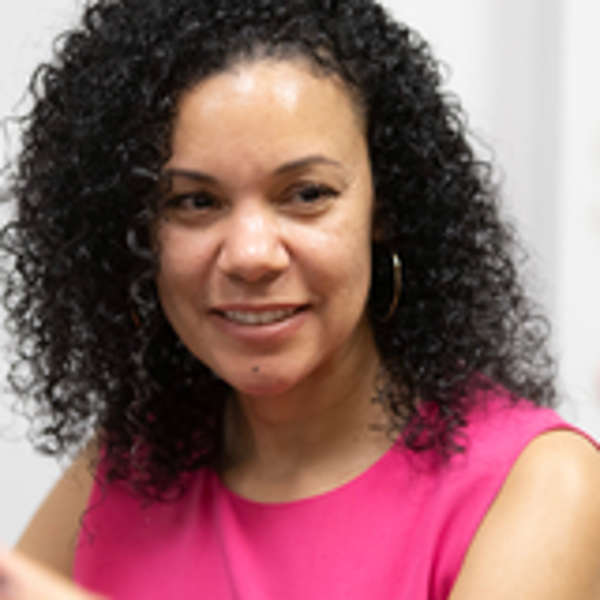The keys to open relationships after foster care adoption
6 tips from an adoptive parent.
Mandy Taylor, foster and adoptive parent, and parent support specialist

When you are adopting a child through foster care and you’ve had ongoing, supervised parent visits, what does openness mean once parental rights are terminated? Is it possible? What would it look like? I have been through this process three times to adopt four children through foster care—yes, openness is possible, and I can tell you what it looks like in our family.
Learning how to maintain relationships after adoption
Today, my children are 22, 20, 17, 13, 11, and 10. Two are biological, and four were adopted from foster care at ages 10, 9, 5, and 3.
My husband and I wanted to maintain contact with our children’s biological parents, but we weren’t sure how to begin. We were used to the agency defining when, where, and how we would have contact, and the agency would oversee the visits.
Once we adopted the children, we needed to figure out how to maintain an open relationship without a set of external guidelines. This was tough to navigate, learning what would keep everyone safe but not offend.
The first thing we did was take some time to establish ourselves as a family. With each adoption, we took a break from parent visits for a time. This allowed the children time and space to process what adoption meant and become a permanent part of our family before jumping back into regular parent or birth family visits.
This was hard for our kids who were used to weekly visits with their biological parents. The older children expressed anger, hurt, and grief. The younger ones struggled to understand why their routine had changed.
Our youngest child was 2 when we began her adoption process. She knew and enjoyed reminding us that “Mumma Day is Tuesday!” It was confusing when “Mumma Day” was suddenly gone. During the adoption transition, we found other activities to do on Tuesdays to think about and honor her biological mother. She’d draw pictures and put them in a special envelope for the next visit. It helped her to have that ongoing connection.
From the time our children were first placed with us through foster care, we began building a relationship with their biological parents. Beyond standard visits, we wanted to keep communication lines open and build trust, demonstrating that we all wanted what was best for the children.
Creating shared memories with biological parents
We created a Facebook page, accessible only to the children’s biological parents, where we would post photos so they could see activities their child was involved in and post comments. I maintained this page during the pause in our weekly visits so the biological parents could stay connected, and we could gauge together whether additional contact would be possible.
When we were ready to resume visits, we agreed on expectations with biological family members about how we would do this. We found that visits in public places with a defined activity worked best so everyone has the same expectation of what will take place, when, and where (e.g., ice skating from 2:00–4:00 p.m.).
We’ve also bowled, roller skated, and visited the zoo together. We spoke with family members before visits about the child’s dance classes, soccer practices, favorite books, and things they were doing at school so they had some conversation starters to talk about the present rather than the past. An activity helped us use that time to create new memories together.
When we plan a gathering with one child’s biological family, our whole family goes. This helps reinforce to the child that we are visiting their biological family, and they are part of our family.
All of the biological family members in our lives have welcomed this practice, saying they like seeing how their child interacts with new siblings and how they are adjusting to our broader family dynamic.
Navigating post-adoption challenges
While these visits have been beneficial, we’ve also worked through challenges. Some of the biological parents have had substance use issues, so early on I was concerned whether they would be substance-free at the visit.
We’ve had situations when a biological parent didn’t keep the visitation agreement, so meeting would not be safe for the child.
We didn’t slam the door shut, but we did tell them at this point and for this reason, we would need to take a break from visits for a time. I agreed to stay in communication during that pause to let them know how the child was doing, and I could give the child updates on how their biological parent was doing.
Some days it feels like we are divorced parents trying to get along. You have to do what’s in your child’s best interest, and they need to know for themselves whether their biological parent is safe and healthy.
A child who had a closed adoption may wonder “what might have been” if they could have stayed with their biological family. Children adopted through foster care wonder that too, and periodically spending time with biological family members has helped answer their questions.
How do I begin?
This is a common question for adoptive parents wondering about continued contact with biological parents after foster care. Mandy shares these tips to provide structure for your developing relationship.
1. Clarify your own openness. As an adoptive parent, unless you can accept that your child called someone “parent” before you, this won’t work. We are “Mom” and “Dad” to our kids, but each child has given their biological parents a new, special name after adoption that honors their family connection.
2. Begin parent to parent. The continuum of contact could include letter writing, sharing photos, talking/texting by phone, planning visits, and more. Develop trust and rapport with the biological parent for a while first before introducing contact with the child. If confidentiality is required, contact could be mediated through an agency where no identifying information is exchanged.
3. Prepare for hard questions post-visit. Before a visit, kids usually experience an emotional build-up with anxiety about how things will go. After a visit, kids may feel sad, wondering, Where is he living? Is she really OK? and they’ll want to know when they’ll be able to see their biological parent again. They will often replay parts of the conversation and wonder about this or that comment: Did that mean something?
4. Children will have different emotional responses. Kids sometimes struggle with feelings of guilt after a visit. If they are happy with their adoptive family, that can feel they are betraying their biological family.
We talk about those feelings and emotions: It’s OK to be sad that you’re missing them. It’s OK to be happy you’re here. It’s OK to be loved by two families. One child likes to be alone after a visit to listen to music and write in her journal. Another likes to have snuggle time when we get home to regulate with stories and quiet interaction.
5. Talk with the biological family about the child’s emotions. When I’ve shared with the biological family how the child responds after a visit, many are open to verbalizing supportive messages to the kids: It’s OK to enjoy the things you’re doing. I hope you will share those things with me. You can draw me a picture or talk to me about it.
6. Be willing to listen and learn. My experience as an adoptive parent sparked an empathy and passion for biological parents in foster care. I became aware of the many ways I had been judgmental toward my children’s biological parents, and I learned to stop myself from making assumptions.
I assumed one parent was selfish for missing a visit until she told me later that some days saying goodbye again is too hard. “It reminds me of the last visit I had with my mother,” she said, “and I feel like a failure.” Listening and learning from each other are key to breaking down fears.
I hope more people will give these relationships a chance.



